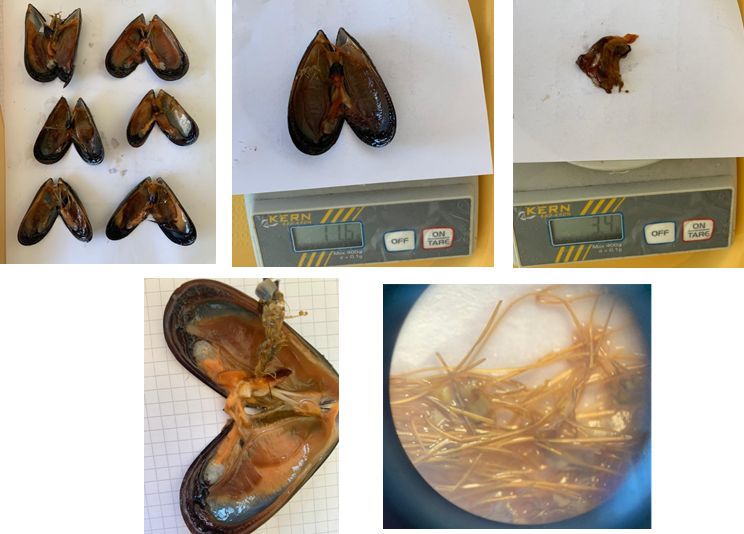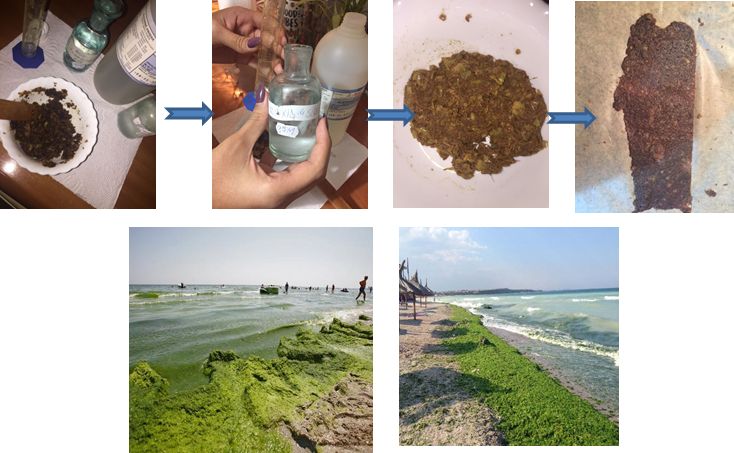Microplastic in the Black Sea
Solutions

- A huge amount of plastics, obtained from hydrocarbons, are currently being produced and used globally. The rate of reuse/recycling of plastic products is still very low, even though innovative technical solutions for plastic recovery have been found recently. However, oil remains the raw material. To limit the pressure generated by this need on a declining resource, we thought of unconventional sources for plastic production, such as: high-starch vegetable mass (which can result from the food industry - apple peels, bananas, potatoes, fragments of corn stalks).
- By extracting starch and adding inexpensive and non-polluting substances (baking soda, acetic acid, glycerin), plastics are obtained with elastic properties that can be molded/molded into molds or slats. Going further with our project, we thought of using a lesser-known and used resource, but which is present on the coastal beaches of the Black Sea almost constantly throughout the year - seaweed macrophytes. Although they contain a lower amount of starch than the higher plants, they are in very large quantities on the shore, often in a state of decomposition, representing a cause of discomfort for tourists and locals. Thus, by collecting the algae thrown ashore, we can obtain two results: both their removal and the production of plastics.
- In conclusion, the plastic obtained has many possibilities of use: packaging materials, materials for greenhouses and solariums (foils or molds).
Benefits:
- reduction of fossil fuel consumption for plastic production
- reduction of CO2 emissions
- use of vegetable waste (vegetable oil, starch, cellulose) from agriculture, food
- use of potentially polluting biomass (macroalgae, dumped)
- low production costs
- obtaining biodegradable bio-plastic
